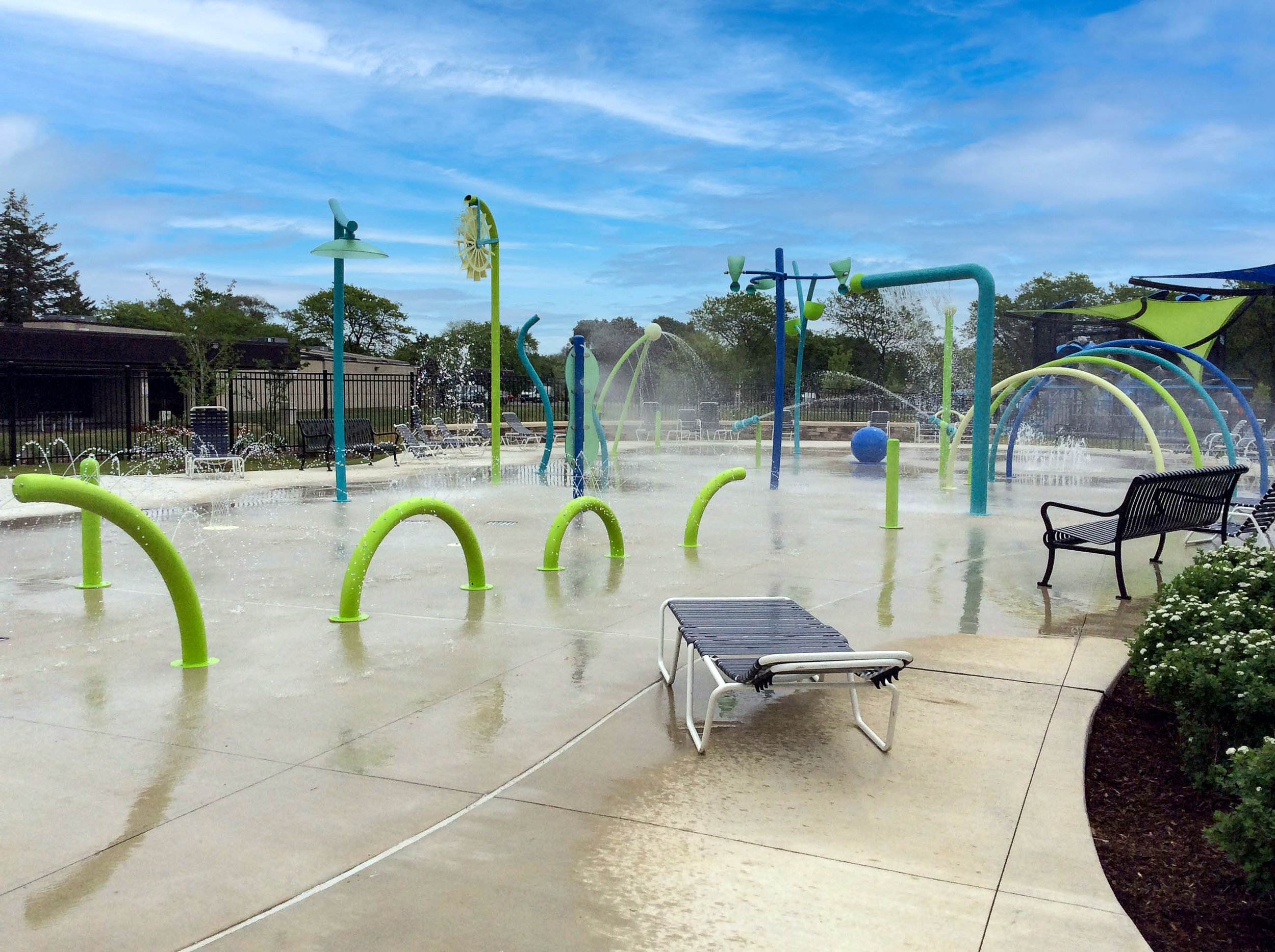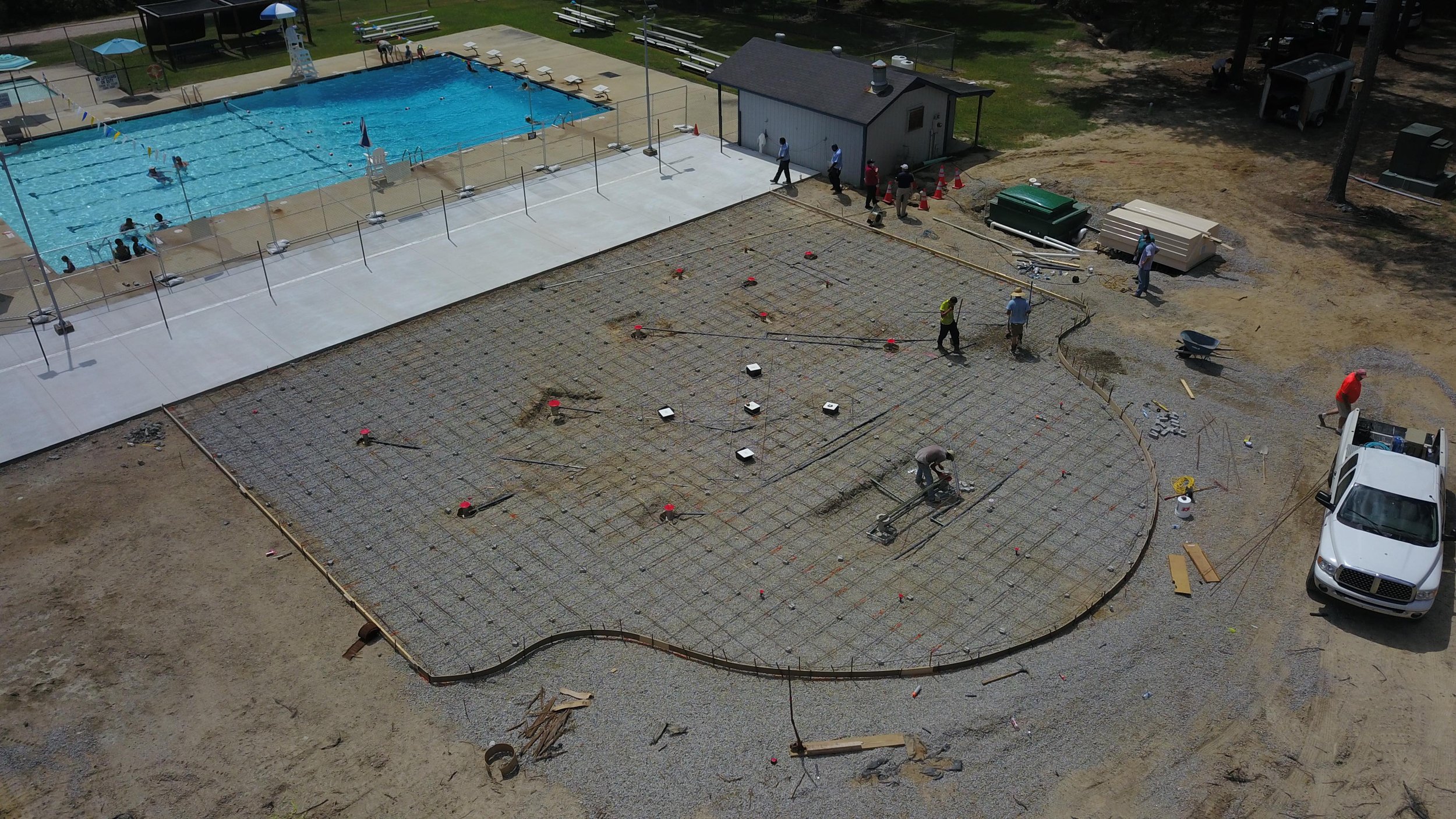The advantages of converting kiddie pools to splash pads
Exclusive Online Content
By Sue Koch
Kiddie pools in public parks were popular a few decades ago and were installed for toddlers who were too small to swim in larger pools. They had less than 1 foot of water and a low wall for parents to sit on the edge, and children could safely and easily enter and exit the pool.
Unfortunately, with the rise of new aquatic trends, these areas have become dead zones in many parks. Kiddie pools tend not to draw a lot of interest, as they are just stagnant, bodies of water with little playability. There is not much for users to do, and they usually look old and dated. With these spaces going underutilized, parks and recreational facilities are looking for better ways to bring new interest and new patrons to aquatic play areas. As a result, converting kiddie pools to splash pads has become a popular renovation option.
Creating inclusivity
In recent years, the aquatic play industry has made creating inclusive areas a priority for parks and aquatic facilities. Many recreation departments, homeowners associations, and community centers are replacing their kiddie pools with splash pads. These aquatic play spaces welcome users with a wide range of developmental, cognitive, and physical abilities, as well as different age groups—including older generations acting as caregivers to children. In fact, this ‘inclusive play’ has garnered even greater importance, as outdoor spaces have become preferred in light of the pandemic.
Manufacturers and designers are seeing a trend in all playgrounds—whether dry or aquatic—to design an area that includes all community members, regardless of their age or abilities. Splash pads are no different, and they need to have sections that attract and encourage a wide range of patrons. Also, using a variety of water features, water flows, spacing, sizes, and colors can make the facility even more accessible to its users. The inclusive play trend coupled with the needs of a community together dictate specific requirements within a splash pad.
Generating revenue
In general, pools tend not to be money-makers, especially for park districts. Ultimately, the more people the park attracts, the more likely it will be to break even on expenses. Since splash pads attract a larger portion of the population compared to kiddie pools, parks tend to bring in more patrons—from babies and toddlers to tweens and grandparents, and especially those with disabilities. If a facility is interested in creating a more inclusive splash pad, manufacturers can help select features and provide design and placement guidance, to really make the splash play area attractive to a much larger segment of the population than any kiddie pool could ever attract.
The author’s company helps with the design and renovation of aquatic areas, whether it is renovating or removing a kiddie pool and replacing it with a splash pad or helping an aquatic facility by adding a much larger splash pad area. They make recommendations
based on space, budget, and the vision for the facility. For example, they might recommend ground-level spray features when budgets are tight, as the bigger the spray feature, the higher the cost. If a facility has a smaller budget, they can help choose ground-level features which are still fun and interactive. The author’s company creates designs for the facility, as well as designs for landscape architects. They work to understand what the aquatic facility has for a vision and its goals for attracting patrons in the community.
A lot of facilities are not only removing their kiddie pools, but they are also increasing the footprint of their play area and adding much larger splash pads. If a facility is able to add a splash pad area of around 2,000 square feet, they can then fence it and open the area even before it is time for the larger pool to open. This is a huge benefit, as it extends the season for the facility and does not limit its operation based on the availability of lifeguards. Larger splash pads also bring more interest, with the pool adding new features to its facilities so more patrons can enjoy the water.
Offering versatility
As with any community gathering space, creating a visually striking splash pad can provide excitement and interest for all users. Oftentimes, using a large, iconic water feature piece within the splash pad is important. Large buckets of water to anchor the splash pad add an element of attraction, even when the facility is not in use. Just watching the water flow—even from a distance—adds to the excitement. One of the more eye-catching options for splash pads is large rings that spray mist. These are both attractive and easily integrated into a sequencing design for inclusive play. Having water splash, cascade, and bubble creates a series of soothing sounds, which invariably enhances the ambiance.
It is also important to remember splash pads serve more than mere water play areas. By employing strategies to enhance the overall visual esthetics, a splash pad can lend year-round appeal to a facility, even in the winter. Some clients, especially homeowners’ associations and residential developments, are very interested in adding lighting to their splash pads and changing their colours several times a year. For example, red and green can be used around the winter holidays.
Unlike kiddie pools, a lot of splash pad features are easy to replace using the same or existing pipes and feeds. Splash pads offer a lot of versatility, as it is fairly easy to give a splash pad a quick update with a new spray feature. In fact, interactive water features can be swapped out and updated, and play equipment like small aquatic slides can easily be added as well.
Streamlining safety and maintenance
For both kiddie pools and splash pads, maintenance procedures are pretty much the same. There might be a little more winterization in a splash pad, as there are often more pipes involved with more water features, but this is not a major difference.
In terms of water treatment, most kiddie pools are either recirculation or flow through and when replacing the kiddie pool with a splash pad, the maintenance is the same and the system can either remain the same or can be upgraded. Recirculation of water with a
water treatment system is common for splash pads. Additionally, they use a much smaller amount of water, which means less of a need for chemical treatment. This reduction in chemical usage also lowers operational costs.
Splash pads are also being installed for safety reasons. Parents can feel more at ease having a smaller child play in a splash pad compared to a kiddie pool because there is no standing water. As mentioned previously, they are also attractive to facilities because they do not need to be monitored by a lifeguard.
Conclusion
A splash pad play area can become a gathering place for people of all abilities, ages, and backgrounds to relax and connect through the joy of water. Not only does the naturally inclusive landscape offer a fun adventure for a community, but adding more features also gives patrons more immersive activities and satisfies their unique physical and cognitive needs. A simple but powerful space, an inclusive aquatic facility offers a glimpse of the larger picture of universal well-being and connectivity.
Looking to change the landscape?
As more aquatic facilities consider upgrading their outdated offerings, it is important to familiarize project teams with the process, as well as what is needed to make their vision a reality.
According to Eric Hornig, principal of Hitchcock Design Group, there are a variety of steps involved in converting an old kiddie pool to a new splash pad.
“First, confirm the community no longer values the existing amenities, as there can be a lot of sentimental attachment,” says Hornig.
Once this crucial stage is cleared, the project can move forward with the help of a landscape architect. They will work with the team to “establish a reasonable budget and prepare schematic design options for consideration, including collaboration with product vendors.”
The new design can then be shared with the community for feedback and consensus on the final outcome. With the design solidified, the project team can now prepare design development and construction documents, as well as seek construction permits through local agencies and public health authorities.
Regulating agencies take these types of facilities very seriously, says Hornig, in order to protect the health, safety, and welfare of the public. It is critical for everyone involved to understand the rules. In addition to water quality and filtration requirements, aquatic facilities may need to include bathrooms, showers, hose bibbs, fencing, signage, attendants, lifeguard equipment, safety surfacing, additional clearance, drinking fountains, deck drains, lighting, or telephones. When the facility obtains applicable permits, the team can bid the project to qualified contractors and select who they would like to work on the project.
The construction process begins by removing or filling the original basin. According to Hornig, the former is usually the case, “as there is no longer a need for water depth and there are likely weak points in the existing basin which are not watertight.”
The builders will then cap and remove the utilities or redirect them elsewhere. Certain elements from the original pool system can be used, but they may require upgrades. Following this procedure, the new system is installed.
Most splash pad systems include:
A timer which controls the operating hours of the system.
An activation device that runs a sequence of play events, so water is not used when no one is around.
A controller which takes input from the activation device and delivers it to solenoid valves, which turn on and off to activate the events.
Overhead events which tend to use a little more water for larger impact.
Ground events which offer a variety of play experiences from nozzles embedded in the ground.
A reservoir.
Chemical treatment systems.
Filtration systems.
There are also two kinds of systems to consider, says Hornig: a drain-to-waste system and a recirculating system. A drain-to-waste system uses water from domestic supply, which is put in motion by the events and goes into the drain. This is a simple, cost-effective system, but it has drawbacks from a water loss standpoint. A recirculating system takes water from the reservoir, places it in motion, then treats it before returning it to the reservoir for reuse. This system is more complicated, has more intense permitting implications, and is more expensive in the short term, but it saves money on water in the long term and is more environmentally friendly.
Ultimately, the main goal in converting a kiddie pool to a splash pad is ensuring the community will enjoy the facility more than they did before. By following these steps and implementing the right health and safety measures, aquatic facilities can ensure their updated amenities will bring enjoyment for years to come.
About the author:
Sue Koch is the owner of Products4Parks in Chicago, Illinois, and a regional sales representative for Water Odyssey. Koch holds a BS from the University of Iowa and has over 17 years of industry experience working with park districts, schools, landscape architects, aquatic designers, and municipalities assisting with the coordination and planning of spray park design and layout, safety, construction, budgeting, and after-sale support. She can be reached at Sue@Products4Parks.com



